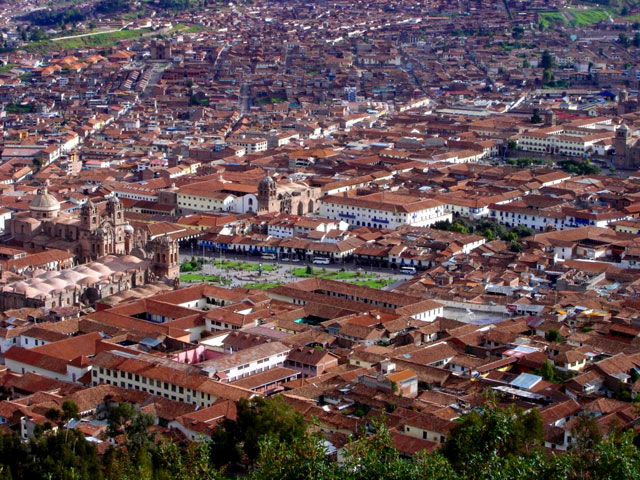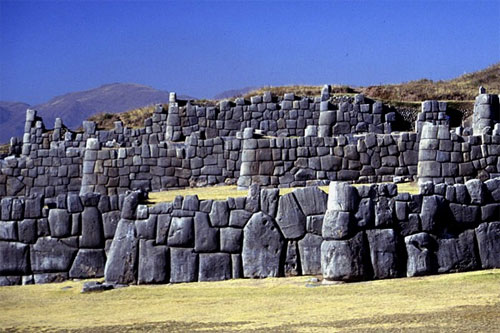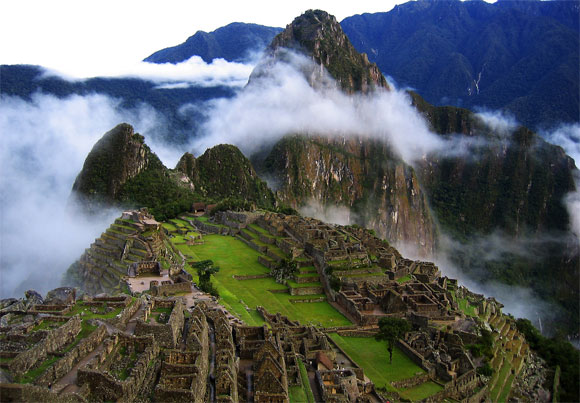
Cusco travel and tourism
The city of Cusco, there are Incan buildings waiting for you to discover them among its cobble-stoned streets, ones like the Koricancha and the palace of Inca Roca as well as Andean Baroque structures from the Colonial Period like the Cathedral and the Church of the Company of Christ. In addition, you can visit the picturesque neighborhood of San Blas where the best artisans in the department have set up their

Cusco city
There are also the towns of Písac, Maras, Chinchero, and Ollantaytambo, which are spread throughout the Sacred Valley of the Incas, one hour from Cusco. From there, it is possible to catch the train to Machu Picchu. Another way of getting to the citadel is by following one of the Inca Trails, a spectacular network of pathways that snake their way among the snow covered mountains, rivers, and overwhelming countryside. This is one of the best trekking routes in the world, since scattered throughout it, you find remarkable archeological sites and areas rich in unique plant and animal species.
Tourist Attractions in Cusco
Main Square, Cusco: During the Inca Empire, the square was called Huacaypata, a Quechua word meaning “place of tears” or “meeting place”. It was an important ceremonial spot where the Inti Raymi or Festival of the Sun was celebrated every year. It is also the place where Franciso Pizarro proclaimed the conquest of Cusco. After the Spanish arrived, the plaza changed. They erected stone arches and built the structures that surround it today.Cathedral of Cusco
Visiting hours: Mon. – Sat. 10:00 A.M. – 6:00 P.M. Sun. and Holidays 2:00 P.M. – 6:00 P.M.The building went through two construction stages: first, the Chapel of the Triumph was built on top of what used to be the temple Suntar Wasi (House of God); later, the cathedral itself was built over the remains of the palace of Inca Wiracocha. A Renaissance building in its majority, the interior decoration is rich in cedar and alder woodcarvings. The choir and the pulpit stand out for their beauty. An important collection of paintings from the Cusco School and silver wrought pieces are also kept there.
Church and Convent of Santo Domingo / Koricancha
Plaza Intipampa, corner of Avenida El Sol and Calle Santo Domingo. Visiting hours: Mon. – Sat. 8:30 A.M. – 6:30 P.M. and Sun. 2:00 P.M. – 5:00 P.M.The Koricancha was one of the most impressive buildings of Inca Cusco according to the historians: the glowing gilding of the interior walls illuminated what used to be the main temple dedicated to the worship of the Sun God. The Spanish built the church and Dominican convent on top of the original structure around 1534 but they collapsed during the earthquake of 1650 and were rebuilt around 1681. The convent possesses an art gallery of valuable seventeenth and eighteenth century canvasses.
Archbishop’s House and the Twelve-Angle Stone
Intersection of Calle Hatunrumiyoc and Jiron Herrajes. Visiting hours: Mon. – Sat. 8:00 A.M. – 11:30 A.M. and 3:00 P.M. – 5:30 P.M.This Vice-royal building with Arabic influence was raised on the foundations of the palace of Inca Roca. Presently, it is the main centre of the Museum of Religious Art. On Calle Hatunrumiyoc, you can see an old Inca wall that was part of the Inca Roca palace and demonstrates the admirable construction skill of the Inca in terms of polished and perfectly placed stones. The most remarkable part is the “Twelve-Angle Stone”, famous for the perfect work and assembling of its angles.

Sacsayhuaman Archeological Complex
Sacsayhuaman Archeological Complex
2 km / 1 mile northeast of Cusco (10 minutes by car). Visiting hours: Mon. – Sun. and holidays 7:00 A.M. – 6:00 P.M.The area contains thirty-three archeological sites. The most famous is Fort Sacsayhuaman. It might well have been a religious structure, but for its location and style, the Spanish and the historians believe it was a military construction. The most important temple in Hanan Qosqo or Upper Cusco might have been located there, dedicated to Andean cosmology and to the worship of the Inti (sun), the Quilla (moon), Chaska (stars), Illapa (ray), and other divinities. It is described as massive for the size of some of its stones, which weigh between 90 and 120 tons. This is also the stage of the Inti Raymi or Festival of the Sun every 24th June.
Choquequirao Archeological Complex
93 km / 58 miles from Abancay (Department of Apurimac) is the village of Cachora. Then, travel another 30 km / 19 miles (2-days hike, walking an average of 8 hours a day)Choquequirao (chuqui k’iraw or Cradle of Gold) could be one of the lost Inca citadels in the Vilcabamba Valley where the Incas took refuge from the Spanish in 1536. The complex consists of nine archeological stone groups. There are hundreds of agricultural terraces, rooms, and irrigation systems. The buildings are constructed around a central promenade or main square.
Machu Picchu
The enigmatic complex of Machu Picchu, the most important and beautiful legacy of the ancient Peruvian, is part of the Historic Sanctuary of the same name, which is also one of the few places in the Americas placed on both the World Cultural and Natural Heritage Lists by UNESCO. It is located high on top of a mountain and complements the exuberant nature that surrounds it, creating a one of a kind place in the world.
Machu Picchu
IMPORTANT ABOUT MACHU PICCHU
Entrance tickets to any of the routes are not sold in the access control. Remember to buy them in advance of your visit at www.machupicchu.gob.pe in electronic form or in authorized outlets.
Purchase your e-ticket online with your Visa or Multired card. You can also buy it in authorized outlets by Visa, Mastercard or at any window of the Banco de la Nación.
The visitor entrance to the Monument will be from 06:00 to 16:00 hrs. and time-out until 17:00 hrs. with a capacity of 2500 visitors per day.
From July 15th, 2011 there are new entrance tickets for the route Machupicchu - Waynapicchu - Temple of the Moon and Machupicchu - Machupicchu Mountain. You may not enter these areas without this ticket. The maximum income is 400 visitors per day, divided into two groups of 200 people. Hours of admission are from 7:00 to 8:00 hrs. and 10:00 to 11:00 hrs. for each routes.
Sales office:
Dirección Regional de Cultura - Cusco / Av. de la Cultura 238-B, Wanchaq - Cusco Peru
Hours: Mon. to Fri. 08:00 to 16:00 hrs. / Sat: 08:00 to 12:00 hrs.
Only Visa or Mastercard card:
AATC / Calle Nueva Baja N° 424 / Mon. to Fri. 9:00 to 17:00 hrs.
DirCetur / Calle Mantas S/N / Mon. to Fri. 9:00 to 20:00 hrs. / Sat: 9:00 to 13:00 hrs.
IncaRail: Portal de Panes N° 105 Plaza de Armas / Mon. to Sun.: 9:00 to 10:00 hrs.
* National and Citizens of Andean Community of Nations
Visit Cusco Peru, blogs travel from Cusco, pictures Cusco, tourist inside of Cusco Peru, traveling through Cusco with all the necessary information to know and to enjoy the Cusco attractiveness.
Copyright (2021) Cusco travel - Tourism in Cusco Peru 2021 Email: admin (at) travelcusco.com
